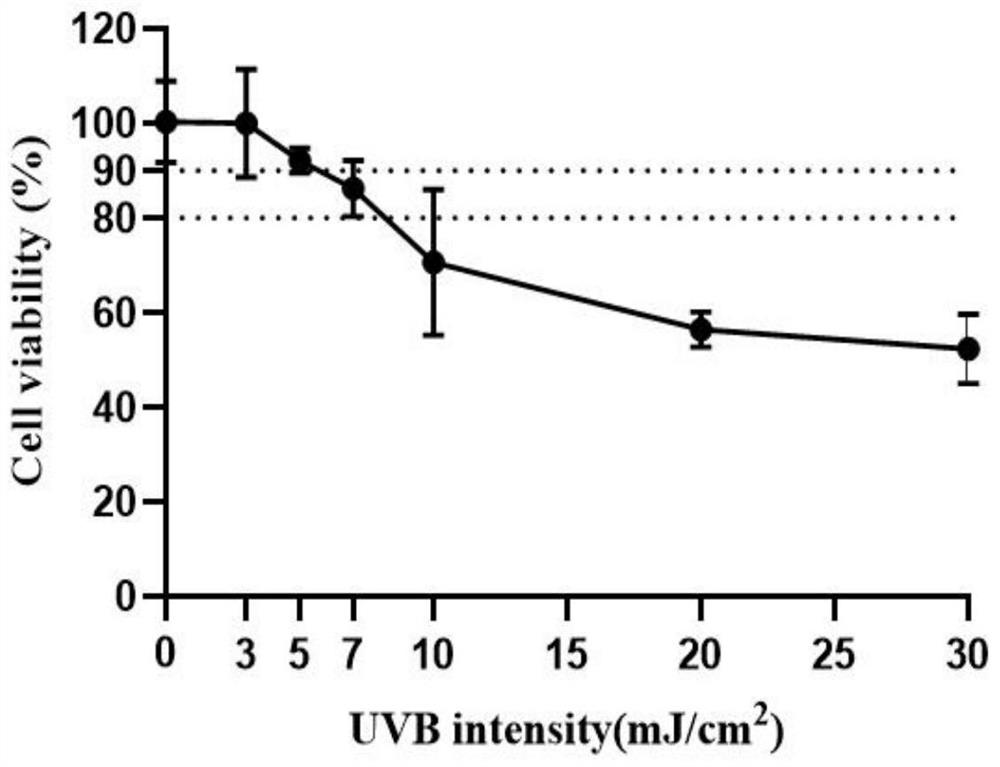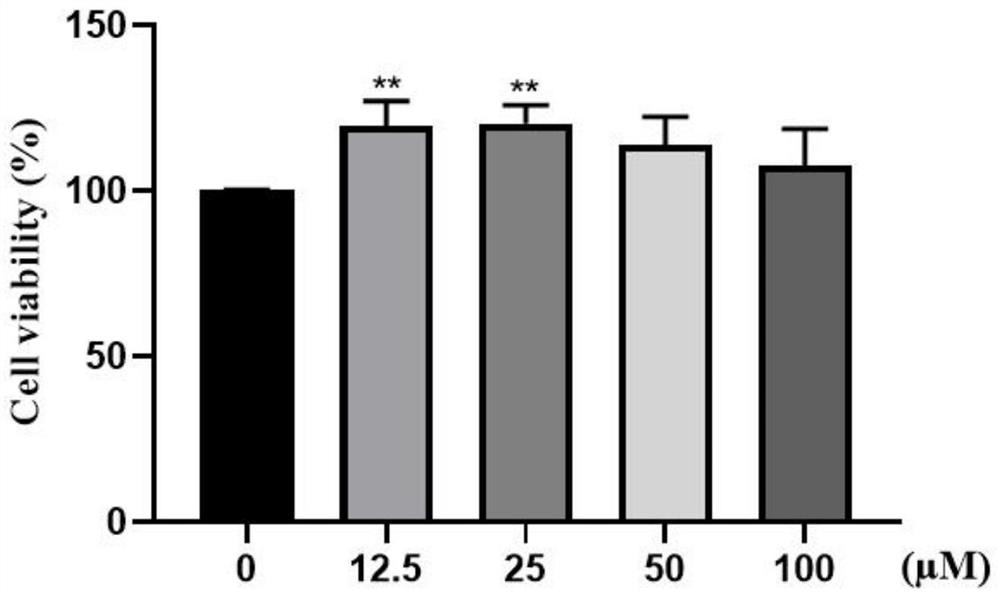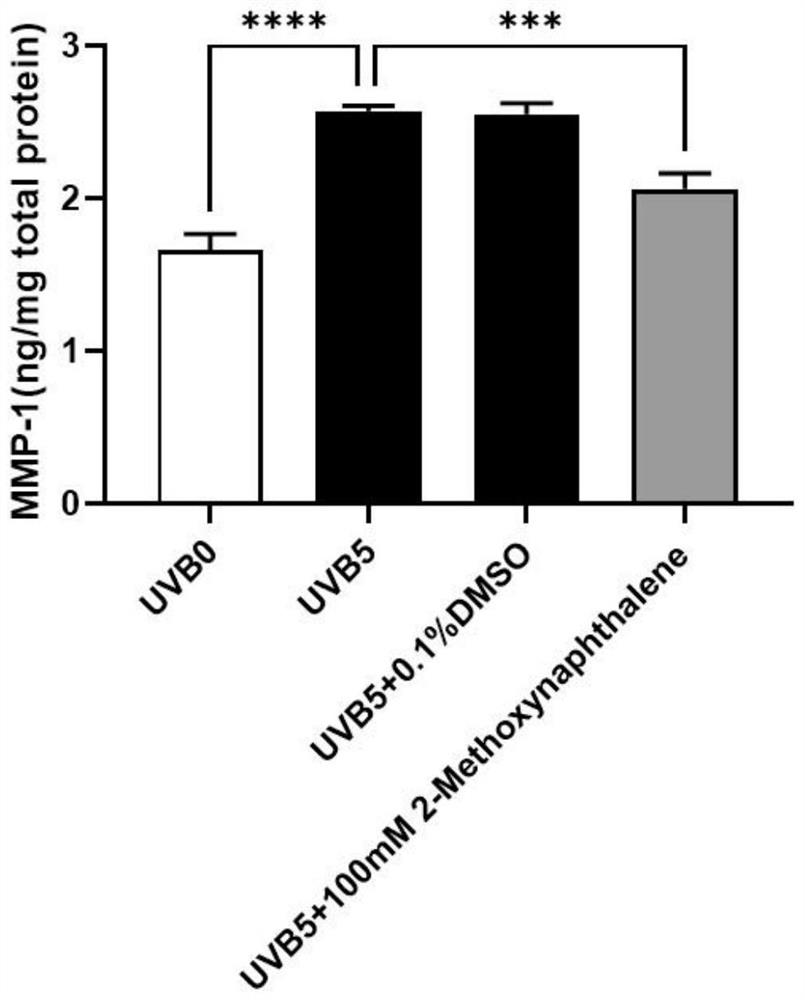Application of 2-methoxynaphthalene in preparation of product for resisting skin light injury
A technology of methoxynaphthalene and photodamage, which is applied in the field of biomedicine to achieve the effect of improving skin wrinkle formation and cell oxidative damage
- Summary
- Abstract
- Description
- Claims
- Application Information
AI Technical Summary
Problems solved by technology
Method used
Image
Examples
Embodiment 1
[0034] Induction of photoaging damage in dermal fibroblasts Hs 68
[0035] Hs 68 cells were seeded in 96-well plates, and when grown to a density of 50%, 0, 3, 5, 7, 10, 20, 30 mJ / cm were administered 2 After culturing for 24 hours, the cell viability under different UV irradiation doses was detected with Biyuntian CCK8 kit.
[0036] Experimental results ( figure 1 ) showed that the cell viability decreased gradually with the increase of UVB irradiation dose. The UVB irradiation dose should be more than 90% of the cell survival rate, so the UVB dose is selected as 5mJ / cm 2 used for subsequent experiments.
Embodiment 2
[0038] Toxicity of 2-methoxynaphthalene on Hs 68 cells
[0039] Hs 68 cells were seeded in 96-well plates, and when the density reached 50%, they were treated with 0, 12.5, 25, 50, and 100 μM 2-methoxynaphthalene (with DMSO as the solvent), and were incubated for 24 hours. Biyuntian CCK8 kit to detect cell viability at different doses.
[0040] according to figure 2 As a result, 2-methoxynaphthalene was not toxic to Hs 68 cells within the experimental concentration range, so the maximum non-toxic concentration within the experimental range of 100 μM was selected for subsequent experiments.
Embodiment 3
[0042] Effects of 2-Methoxynaphthalene on MMP-1 Protein Expression
[0043] The cells were seeded in a 6-well plate, and when the density reached 50%, they were treated with UVB, UVB+ 2-methoxynaphthalene at a concentration of 100 μM, and UVB+0.1% DMSO, while the cells in the blank control group did not receive any treatment (marked as UVB0); after each group continued to culture for 24 hours, the supernatant and cells were collected.
[0044] MMP-1 protein was detected by elisa kit. ELISA detection principle: The MMP-1 detection antibody was immobilized on the surface of polystyrene microplate by physical adsorption, and the sample to be tested was added, which was indirectly reflected by the color of the enzyme marker. MMP-1 content. Finally, MMP-1 protein levels were normalized to total cellular protein content.
[0045] The results show( image 3), after Hs 68 cells were irradiated with UVB, the level of MMP-1 protein secreted by Hs 68 cells increased significantly ( *...
PUM
| Property | Measurement | Unit |
|---|---|---|
| wavelength | aaaaa | aaaaa |
Abstract
Description
Claims
Application Information
 Login to View More
Login to View More - R&D
- Intellectual Property
- Life Sciences
- Materials
- Tech Scout
- Unparalleled Data Quality
- Higher Quality Content
- 60% Fewer Hallucinations
Browse by: Latest US Patents, China's latest patents, Technical Efficacy Thesaurus, Application Domain, Technology Topic, Popular Technical Reports.
© 2025 PatSnap. All rights reserved.Legal|Privacy policy|Modern Slavery Act Transparency Statement|Sitemap|About US| Contact US: help@patsnap.com



